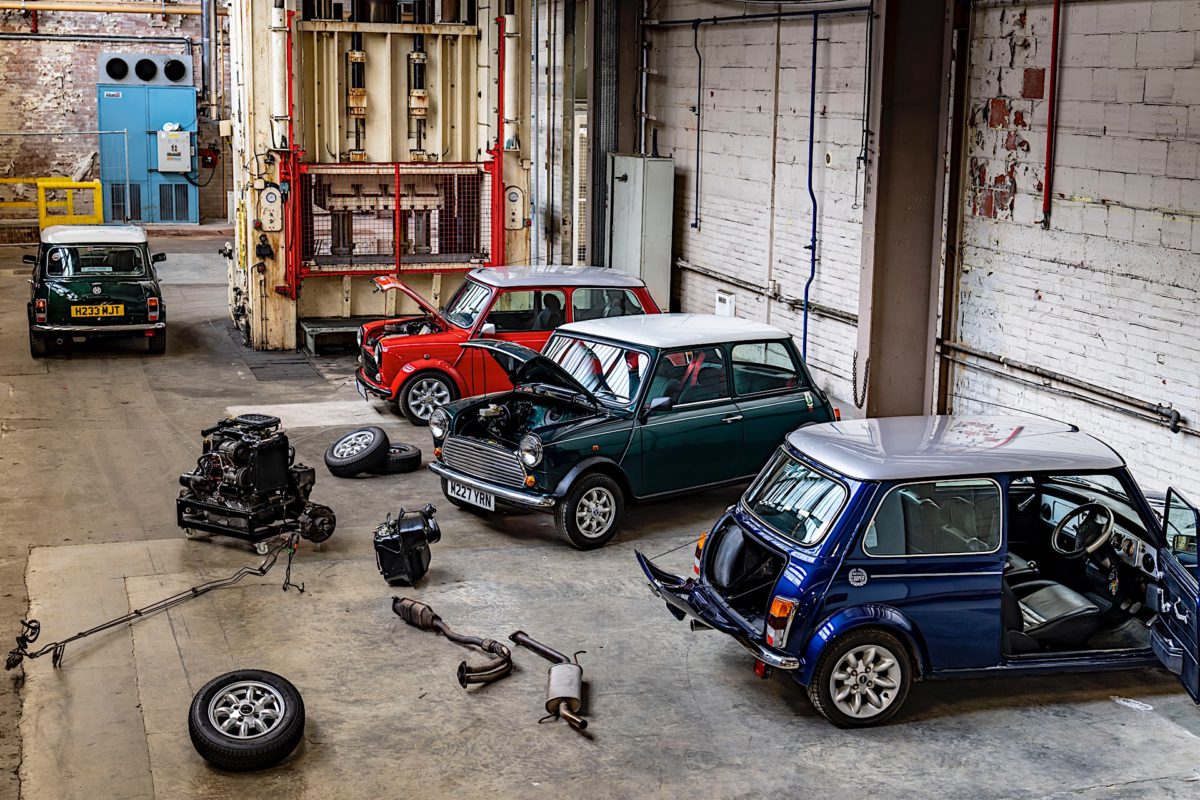Got a classic Mini Cooper? Looking to restore it but gut out the internal combustion components and replace them with battery-electric ones? Well, you’re in luck because Mini has just announced a program to restomod classic examples into battery-electric vehicles. Called the Mini Recharged Project, this program aims to cut all emissions produced while retaining the driving fun of the iconic small hatchback.
The Mini Recharged Project was born even before the first all-electric modern Mini Cooper SE Hardtop went into production. This program came after a hugely positive reaction to a one-off all-electric classic Mini Cooper shown at the 2018 New York Auto Show. It eventually resulted in the creation of a dedicated team at Mini Plant Oxford in Britain that was tasked to work and develop a way to restomod classic Minis into EVs.
Vehicles that go through the program will have their internal combustion engine swapped out for an all-electric powertrain. One of the key aspects of the Mini Recharged Project is that it emphasizes heritage and preserving the exterior design of the vehicle as one of its pillars. Certain components aren’t touched while the ones that can be easily be restored are modified. This also allows the car to be returned to its original condition in the future in case it needs to go through major rehabilitation. The internal combustion engine of each vehicle is also marked for preservation and storage so it can be used later if the owner decides to swap it back in.
This restomod is a way to extend the life of a classic Mini sustainably. Powering it is an electric motor that continuously makes 120 hp and enables the classic Mini Cooper to hit 100 km/h (62 mph) in roughly 9.0 seconds. Mini doesn’t reveal the energy capacity of the high voltage battery but says it can recharge at rates of up to 6.6 kW. On a single charge, the car can travel up to 160 km or around 99 miles. The circular instrument cluster, a Mini trademark, now shows the drivetrain temperature, selected gear, range, and speed.
Moving to an all-electric powertrain gives the classic Mini a quiet driving experience and instant acceleration. Additionally, it gives the car the ability to enter electric or low-emissions driving zones in large cities like Oxford Street and Piccadilly Circus in London without paying a congestion charge. Owners won’t need to file a new registration for their vehicle. The restomod of classic Mini Coopers will be done in Britain. Each converted vehicle also gets an individual number to make it more unique.
As part of the BMW Group, Mini will be an all-electric brand by the 2030s thanks to its parent company’s focus on sustainability. Swapping out the internal combustion engine for an all-electric one in classic examples via the Mini Recharged Project is just one of the avenues Mini is contributing to that goal. In 2023, Mini will introduce a dedicated battery-electric crossover and the next iteration of the Mini Cooper SE Hardtop. The third-generation Mini Countryman, on the other hand, will use the BMW Group’s new FAAR architecture and offer a plug-in hybrid variant. A next-generation Mini Convertible with a battery-electric powertrain is scheduled to arrive in 2025, the same year that Mini will launch its final internal combustion model. By 2027, Mini expects 50 percent of its sales to consist of EVs.
